yes definitely for sure. gorillatrekkingsafarisuganda.com
12 Techniques That Will Help You Survive a Deadly Battle With an Animal
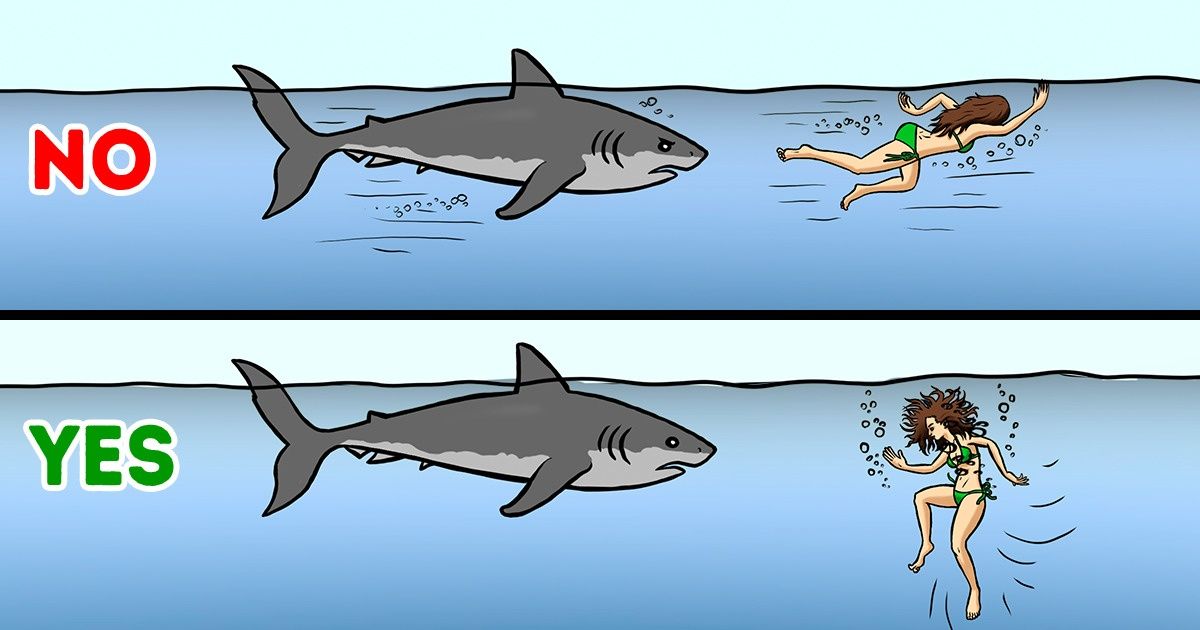
We hope you will never meet a hungry lion and never have to run away from a rhino or swim away from a crocodile. But if it happens, it’s important to know how to behave correctly to stay alive.
In order to be ready for anything, Bright Side has collected techniques that will save your life if you meet a wild animal.
Sharks

The good news is out of over 500 types of sharks, only three of them have been involved in attacking people without being provoked. These three sharks are the great white shark, tiger shark, and bull shark. There’s another shark called the oceanic whitetip that might have harmed many shipwrecked people, but these incidents aren’t officially counted in the records. The bad news is that if a shark gets interested in you, it will be very difficult to get away from it.
- In order not to attract sharks, avoid getting blood or urine in the water. Sharks can sense the smell from several kilometers away.
- If you meet a shark face-to-face, don’t turn your back and don’t try to run away in panic. By doing this, you will look like prey. Move slowly.
- If you are caught, aim at the eyes and gills. Those zones are sensitive.
Kangaroos

Kangaroos attack only if you invade their territory. In this case, the animal will feel a threat. To avoid conflict, follow the next steps:
- Cough. Short and quiet coughing is perceived as a sign of illness, and you are likely to avoid an attack.
- Slowly move back. You will look smaller and, therefore, less dangerous.
- Don’t turn around, and don’t run. If you do, you will provoke an animal that can jump really far and reach you in a moment.
Lions
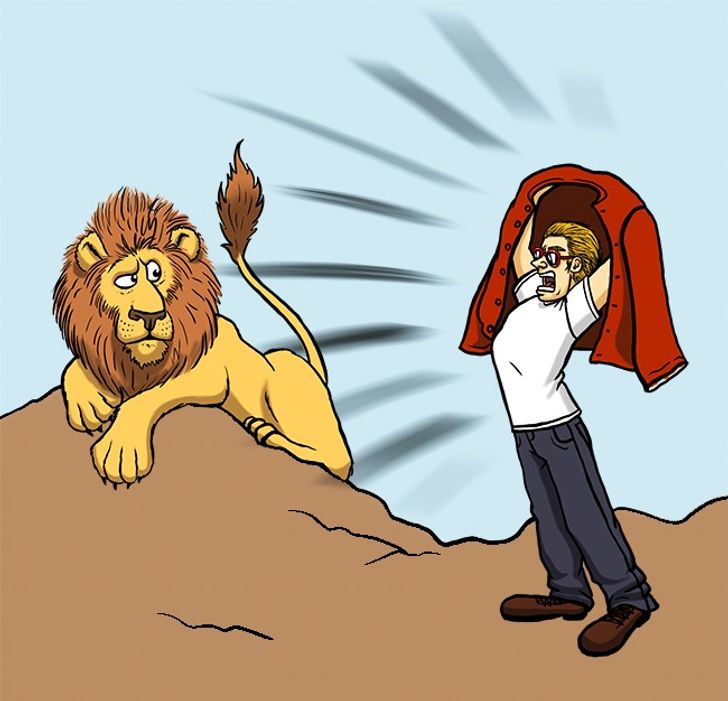
If you meet a lion, look into his eyes. Don’t turn your back, and don’t look away because discontinuity in eye contact will give the predator time to attack.
- Try to look bigger. Lift up your arms or a jacket. If you look big and dangerous, the predator will try to avoid contact.
- Talk to the lion in a moderately loud and confident voice. Also, make sounds and gesticulate. This kind of behavior is not typical for a victim. It will mislead the animal, and he will perceive you as an irritation that it is better to stay away from.
Elephants
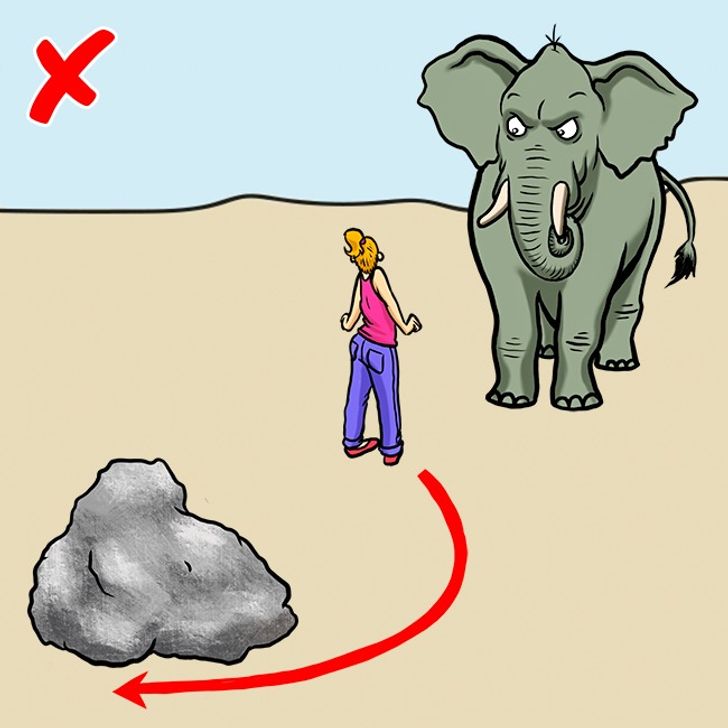
Elephants are clever and friendly animals. Nevertheless, they can attack, especially female elephants who assume you are a danger to their cubs.
- If you meet an elephant, pay attention to its body language. A twisted trunk and ears looking back mean that he is going to trample you.
- If the animal is attacking you, don’t run away. Instead, try to find something that will serve as a barrier between you and the elephant. It can be a rock or a tree.
Rhinos
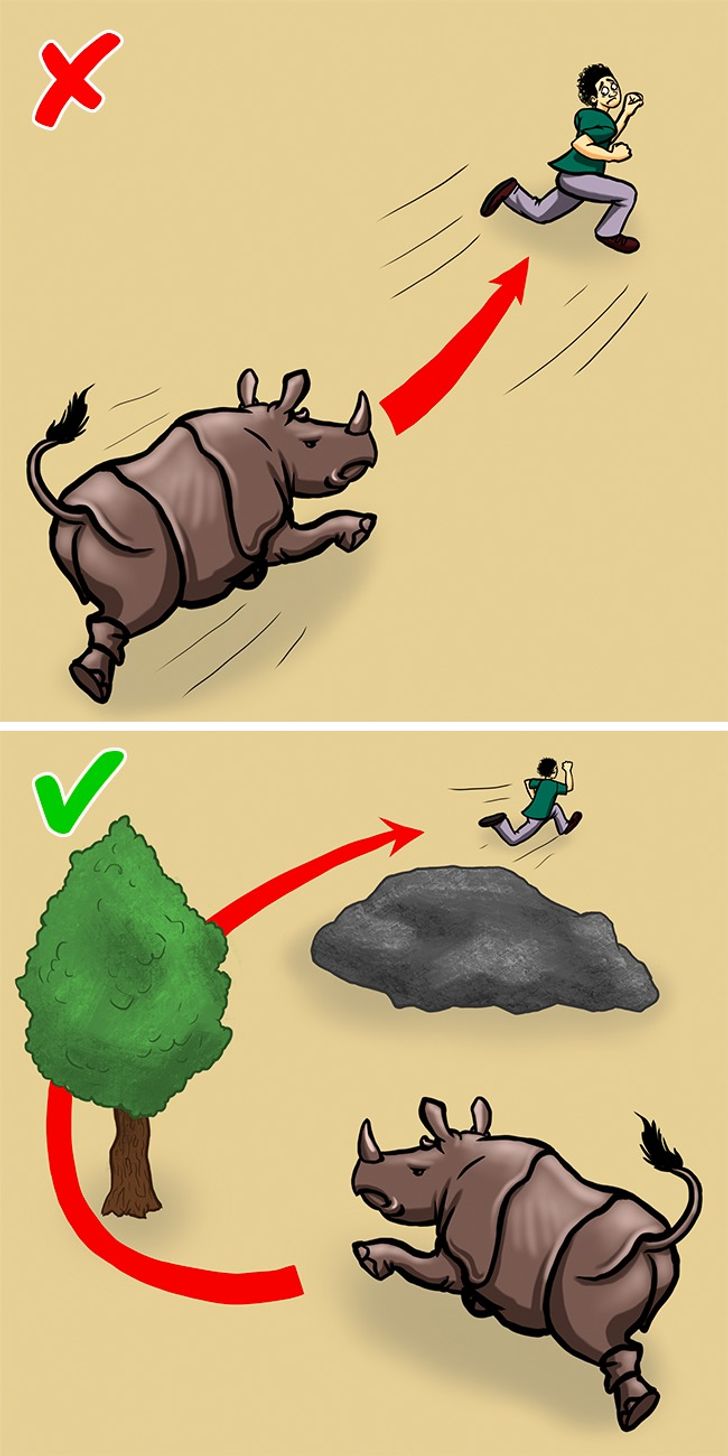
Rhinos have very bad eyesight. That is why it is easy to frighten them, making them attack. Rhinos can develop a speed of 60 km per hour, and it is very difficult to run away from them. However, it is still possible.
- The only way to hide from a rhino is to stand behind a tree — it is a significant obstacle for him. This animal will not follow you through bushes or high grass.
Hippos
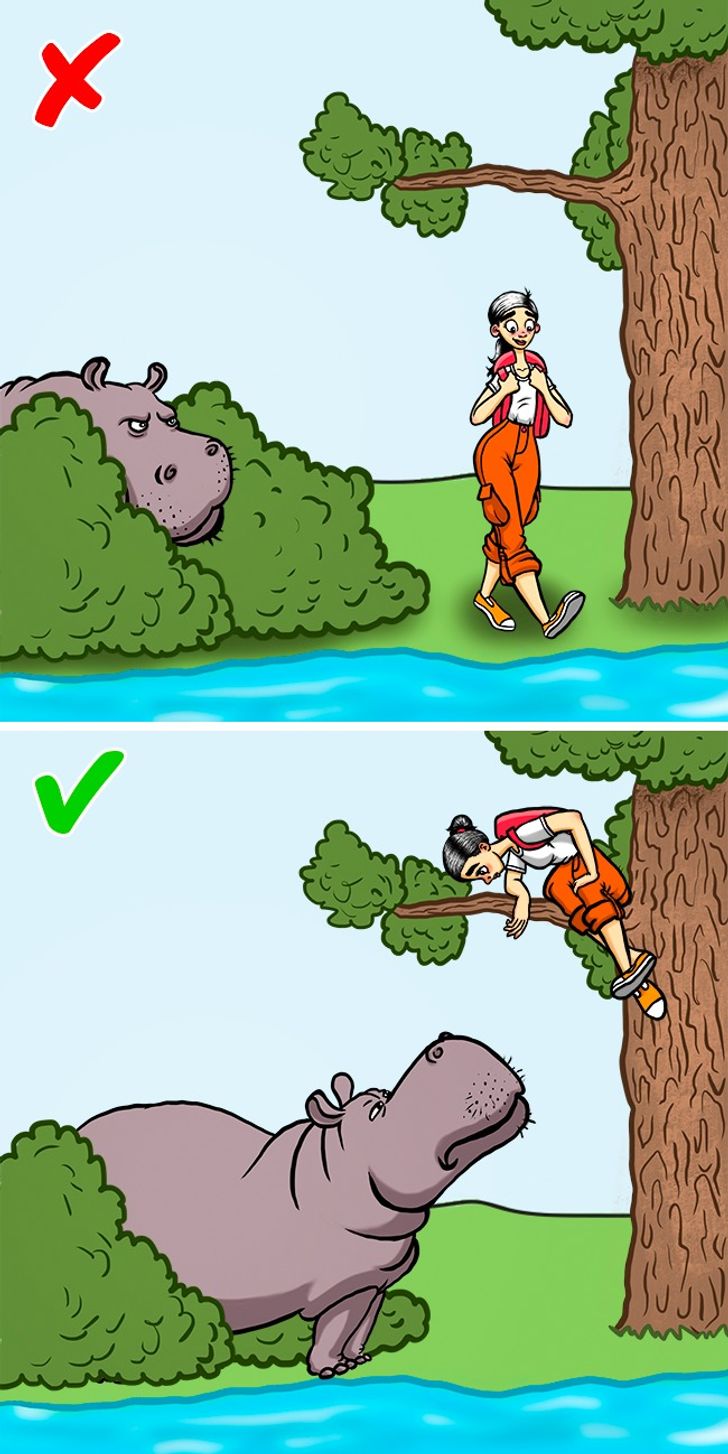
These animals seem nice. However, more people die from them than from crocodiles. Despite their weight, hippos can run at 30 km per hour. Moreover, it’s easy to make them angry.
- If the weather is hot, try not to go into brushwoods. During a drought, the level of water goes down, and hippos hide in the tall grass.
- To make a hippo leave you alone, climb up a tree, a big rock, or a sharp hill. Wait there until the animal leaves.
Bulls
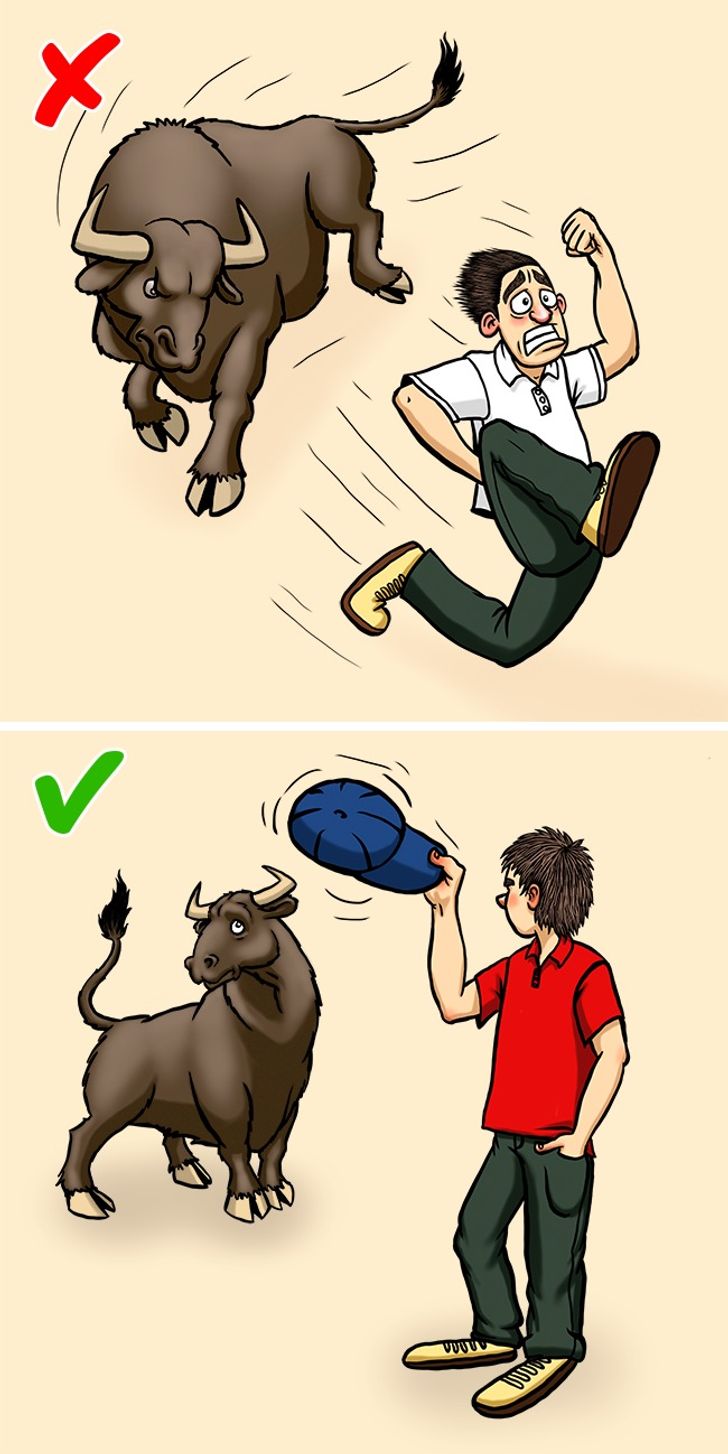
Despite common opinion, bulls react to motion, not to a red (or any other) color.
- That is why if a bull is running to you, stand straight and still. Use your hat, T-shirt, or any other clothes as bait. Once the bull comes close enough, throw this item of clothing aside — the bull will run after it.
Jellyfish

The sting of a jellyfish brings incredibly long and dull pain. You could follow the common recommendation and pee on the sting. However, that is a myth.
- Right after getting the sting, wash it with salt water. Freshwater will only worsen the situation. Then, using a stick or tweezers, remove the leftovers of the tentacles. If you have an antihistamine cream, apply it to the sting.
Alligators or crocodiles
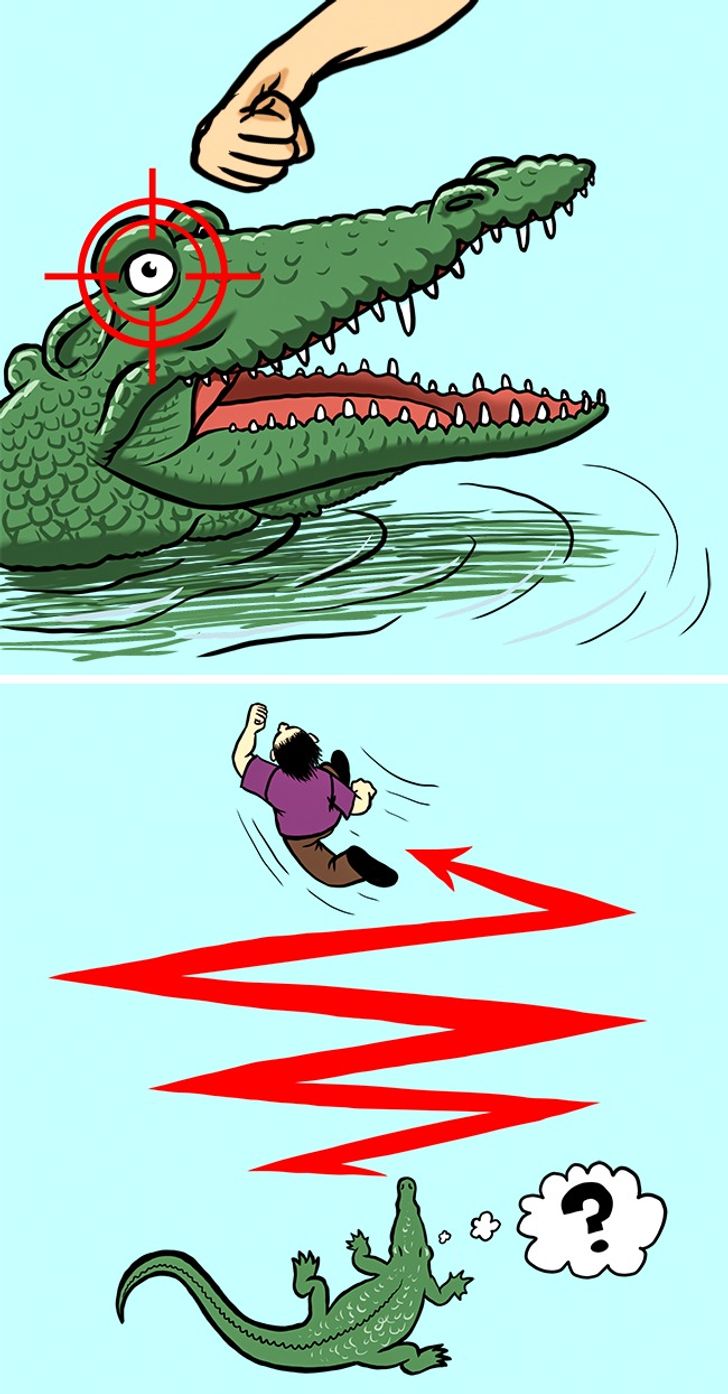
The jaws of these animals are one of the strongest on the planet. If you get caught by an alligator or a crocodile, it will not be easy to free yourself.
- If you are caught, hit the animal’s eyes. The eyes and throat of these animals are the most sensitive areas. So aim right there to free yourself.
- If you notice this predator crawling to you by ground, make as much noise as you can and run in a zigzag. This is a case where running and shouting are the best solutions.
- If you see a crocodile while swimming, don’t make splashes and don’t shout — it will attract his attention. Try to swim away as quietly as possible.
Snakes
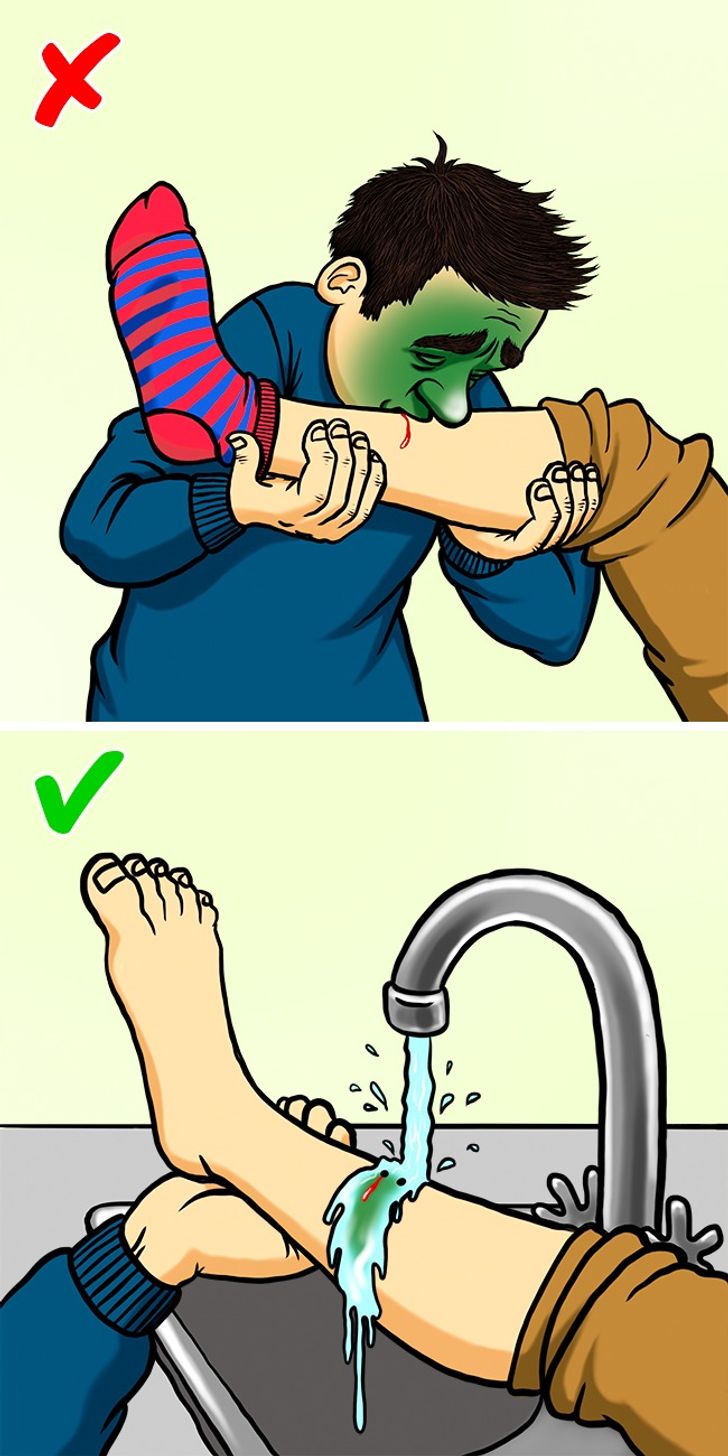
Most snakes are not dangerous and not poisonous. 80% of snake bites are received when people are trying to catch them.
- If you notice that you are being followed by a snake, stomp. The vibration will mislead the snake, and it will leave you.
- If you are bitten, don’t try to suck the poison out of the wound as we often see in movies. It’s better to wash the wound with tap water, fix a tourniquet, and call the rescue service.
Gorillas
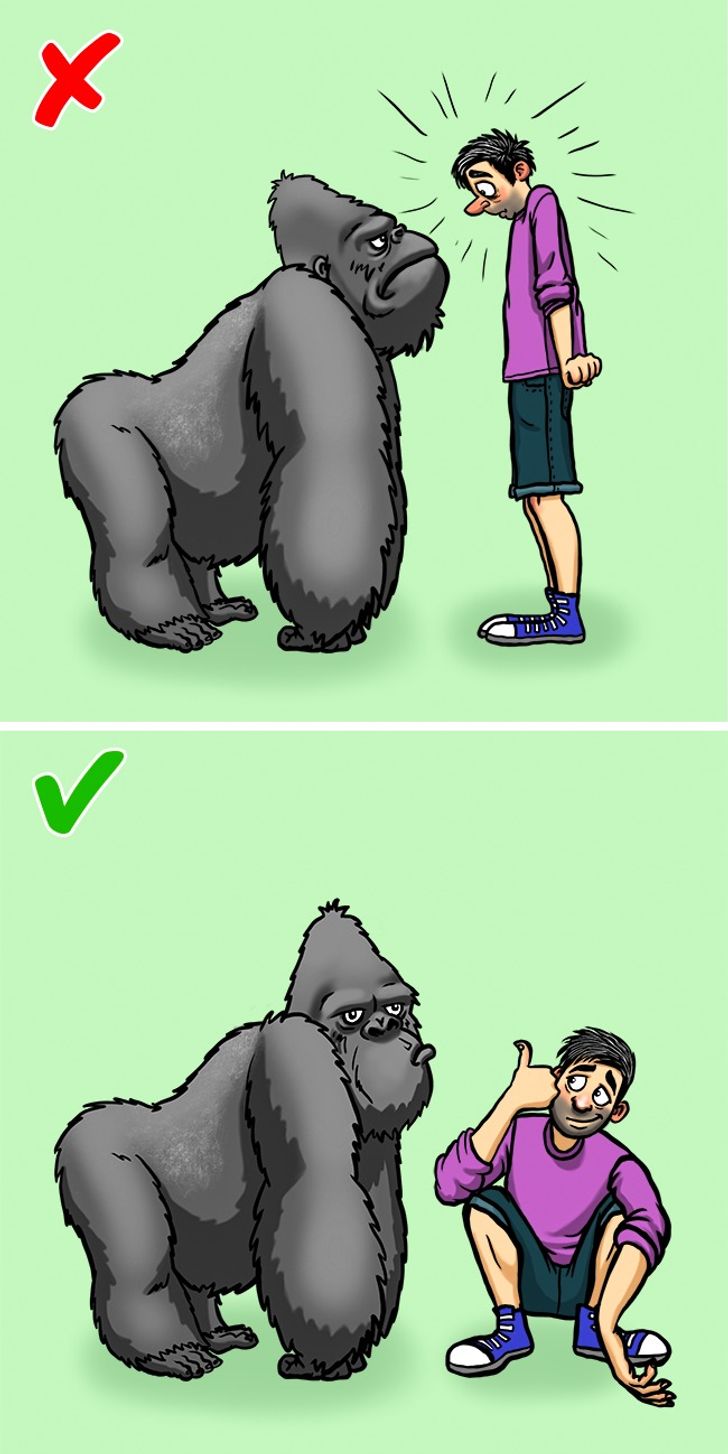
Gorillas are called the kings of jungles, and there is a reason for it. They are real leaders who protect their families and space. They will not attack you if you behave well.
- Sit down so as not to look bigger or taller than a gorilla. Try to whisper, and avoid looking straight into its eyes.
- In case of an attack, roll into a ball. Gorillas are proud animals, and, as a rule, they will not attack the weak and defenseless.
Bees

Bees will protect their hive and can sting you even if you are simply passing by.
- Dark colors attract the attention of bees. So if you are wearing a dark T-shirt, the chance of getting stung by a bee is much higher.
- If there is a swarm or just a couple of bees chasing you, hide in a dark place. The lack of light will mislead them.
Comments
Related Reads
I Absolutely Refuse to Tolerate My DIL’s Laziness, My Son Deserves a Wife, Not a Freeloader

I Refused to Let My MIL Own My Family Budget, Now My Marriage Is on Thin Ice

My Family Chose My Brother Over My Wedding, So I Cut Them Off

15 Stories That Prove a Small Spark of Kindness Can Light Up a Fading Soul

My Rich Friend Demanded I Bake Her Wedding Cake for Free, and My Refusal Almost Ended Our Friendship

11 People Who Chose Kindness Over Looking Away

I Refuse to Be My Family’s ATM Just Because I’m “the Successful One”

I Refuse to Sacrifice My Health to Keep My MIL Happy, I’m Her DIL, Not a Speechless Doormat

15 People Who Didn’t Want a Cat but Were Chosen by Fate Anyway

18 Stories That Show Kindness Can Be the Strongest Force of All

10 Babysitting Stories That Went From “No Problem” to “What Just Happened?”

My Coworker Reports Everyone to HR to Get Bonuses—So I Turned the Tables
